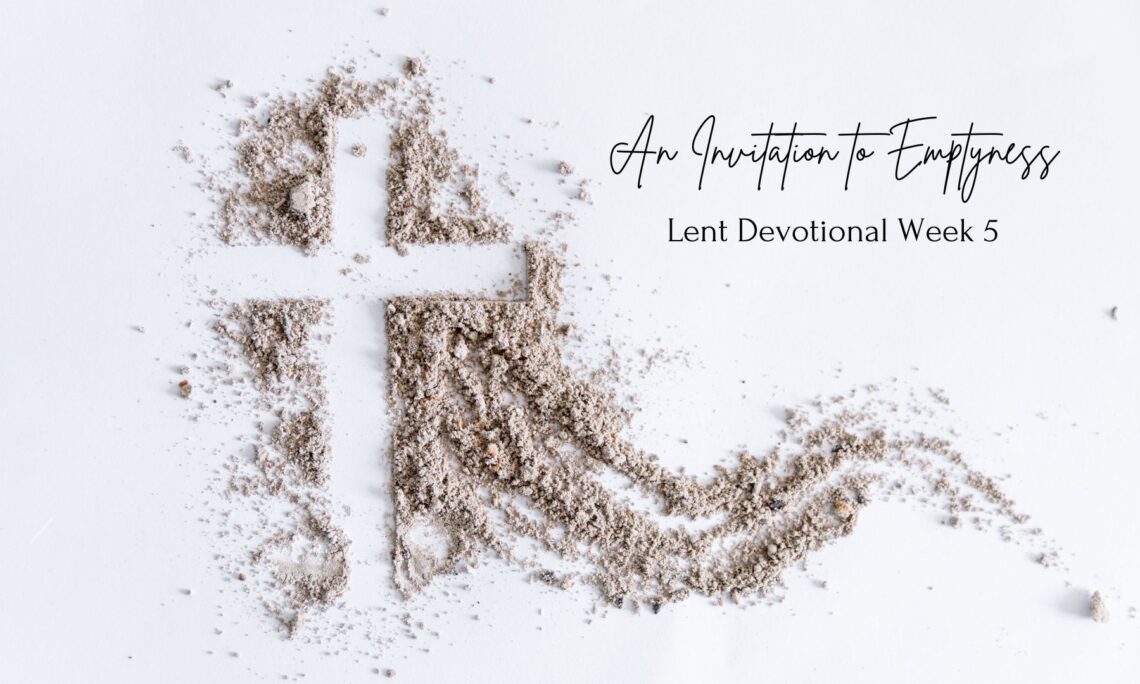
Susan Narjala
Keeping it Real

An Invitation to Emptiness
If you’ve grown up in the church, you’ve heard the Easter message on repeat.
You’ve read the Bible passages. You’ve heard the sermons. You’ve sung the songs. You get it.
While the message of Jesus’ resurrection is central to your faith, there may be a sense that you’ve done everything you can to engage with it. Now, you’re just cruising along for the ride.
But what if we went back to that first Easter? What if we stopped at the tomb with as much wonder and awe as we do when we behold the manger?
In this last installment of our “Rid Me of Myself” Lent devotional, we stop at the empty tomb.
When the women went to the tomb at the crack of dawn that first Easter, they were met by an angel. His words were startling. Perhaps among the most profound words in human history: “He is not here; he has risen, just as he said.” Matthew 28:6
And then they add this: “Come and see the place where he lay.”
God didn’t just want the women at the tomb to simply know about the resurrection. He wanted them to engage with it. He wanted them to witness and experience it firsthand. He invited them to “Come and see.” The angel could have just as easily said: “Here’s the thing: Jesus is risen. Now go and tell the others.” Instead, he invites them in.
Into an empty space where they can experience the weight of God’s glory.
How does that make a difference to us today?
Clearly, we can’t physically walk into an empty tomb. Unlike Simon Peter in the book of John, we can’t run into the tomb to see the strips of linen and the cloths that wrapped Jesus’ body.
But here’s what we can do. As we approach Easter, we can pause and create empty spaces in our lives to ponder anew what Jesus has done for us.
We can determine to engage with the story and not hang out in the background. Some of us are like the disciple John, who says in the eponymous book that he outran Peter and was the first one at the tomb. But he only peeked in. Was he afraid of what he would find? Was he fearful of what that would mean for his life? Was he worried he would be disappointed? Maybe he didn’t want to risk those emotions. So he stood on the outside. It was only when Simon Peter went in that John did, too. He says of himself, “Finally the other disciple, who had reached the tomb first, also went inside. He saw and believed.” John 20:8
Friend, you and I may already believe. But could your faith and mine use a refresher?
Could it be that we need to take that risk and heed the invitation to come and be in the emptiness?
Often, that means setting aside everything else over the next few days to sit before the cross and situate ourselves in the barrenness of the empty tomb.
But more likely, it means that we pray, “God, rid me of myself,” so our self-involved, self-reliant thoughts don’t take center stage. So we find ourselves in stillness.
So, in the barrenness of the empty tomb, we discover more of the fullness of God.
If this blog resonated with you, SUBSCRIBE to my weekly newsletter for FREE so you get my posts delivered to your inbox. I would love a Facebook or Instagram follow or share if you’re on social media. Thanks a ton for stopping by!


Comments
4 Comments
Susan
Thankyou! For this in sight- to pause and wait in the empty spaces to see & experience the fullness of God.
Susan Narjala
Amen. Yes, for sure – to find those empty spaces and moments on the outside as well as the in. God bless. – Susan
Maura
A good reminder to truly stop and not just be on cruise control
Susan Narjala
Yes, for sure. So easy to slip into cruise control. Blessings, Susan